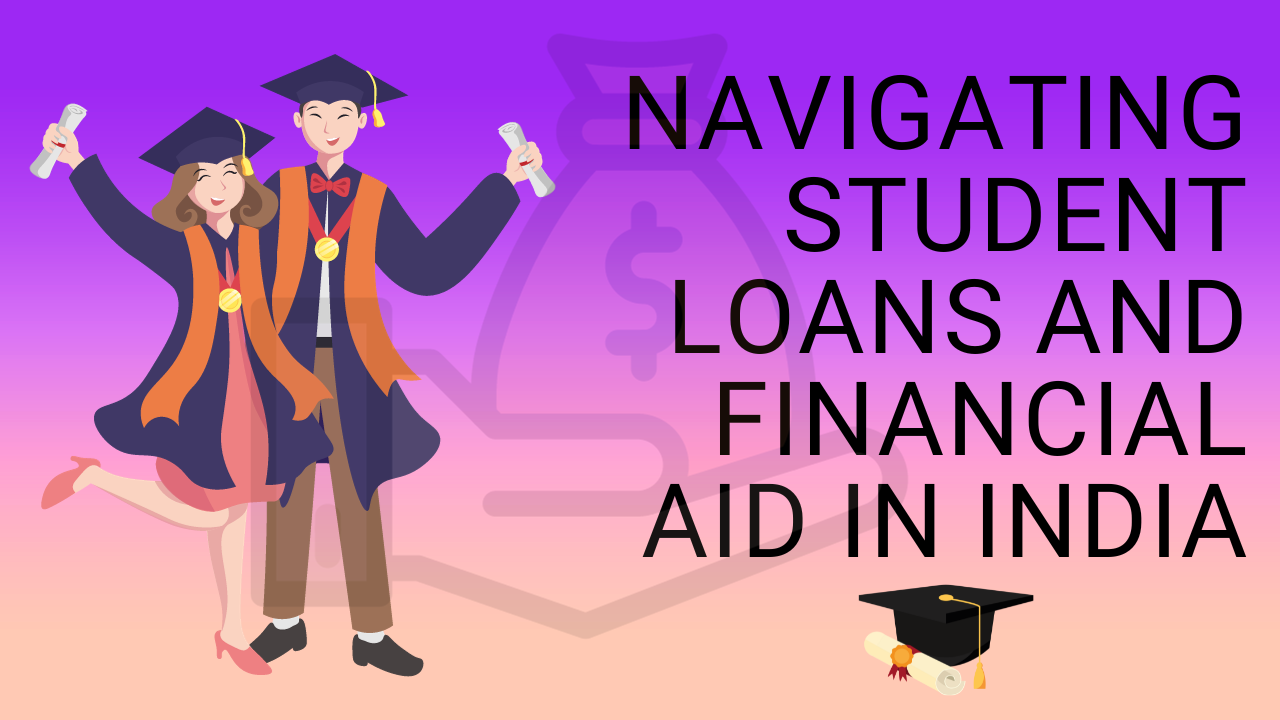
Education is the gateway to a brighter future, but for many students in India, the path to higher education is laden with financial challenges. In this comprehensive guide, we will explore the landscape of student loans, scholarships, and financial aid options available in India. By understanding the intricacies of these offerings, students can make informed decisions about financing their education and embark on their academic journey with confidence.
Student Loans: A Lifeline for Aspiring Scholars
Student loans are a vital financial tool that enables students to pursue higher education by covering various costs, including tuition fees, accommodation, books, and other related expenses. In India, several banks offer student loans with favorable terms, such as lower interest rates and extended repayment periods. Let's delve into the specifics of some prominent banks providing student loans:
1. State Bank of India (SBI):
- Interest Rate: 7.30% - 9.45%
- Loan Amount: Up to 20 lakhs for studies in India and up to 30 lakhs for studies abroad.
- Repayment Tenure: Up to 15 years.
2. HDFC Bank:
- Interest Rate: 9.50% - 13.30%
- Loan Amount: Up to 20 lakhs for studies in India and up to 40 lakhs for studies abroad.
- Repayment Tenure: Up to 15 years.
3. ICICI Bank:
- Interest Rate: 8.20% - 11.85%
- Loan Amount: Up to 20 lakhs for in-country studies and up to 40 lakhs for out-of-country studies.
- Repayment Tenure: Up to 10 years.
4. Axis Bank:
- Interest Rate: 8.55% - 13.50%
- Loan Amount: Up to 75 lakhs can be granted for studies in India and abroad.
- Repayment Tenure: Up to 15 years.
5. Punjab National Bank (PNB):
- Interest Rate: 7.30% - 9.65%
- Loan Amount: Up to 10 lakhs for studies in India and up to 20 lakhs for studies abroad.
- Repayment Tenure: Up to 15 years.
Bank of Baroda:
Interest Rate: 7.25% - 9.25%
Loan Amount: Up to 80 lakhs for studies in India and abroad.
Repayment Tenure: Up to 15 years.
Beyond Loans: Exploring Scholarships and Grants
While student loans are a common financing option, students must explore additional avenues such as scholarships and grants. Many government and private organizations offer financial assistance based on academic merit, financial need, or specific criteria. Scholarships and grants can significantly reduce the financial burden and, in some cases, eliminate the need for loans.
Interest Subsidy Schemes: Easing the Financial Burden
To make education more accessible, some banks and financial institutions offer interest subsidy schemes, particularly for economically weaker sections of society. These schemes involve the government bearing a portion of the interest during the moratorium period, significantly reducing the overall cost of education for deserving students.
Navigating the Moratorium Period
Understanding the moratorium period is essential when considering a student loan. This period refers to the time during which the borrower is not required to make any repayments, typically covering the course duration and a brief period after graduation. The moratorium period allows students to focus on their studies without immediate financial pressure and provides a window for them to secure stable employment before beginning their loan repayments.
Co-Borrower and Collateral: Partners in the Educational Journey
In many cases, banks may require a co-borrower, usually a parent or guardian, who assumes joint liability for the loan. Additionally, providing collateral may be necessary for higher loan amounts. Understanding these requirements is crucial for both students and their co-borrowers to make informed decisions about the loan application process.
Repayment Options: Tailoring Plans to Fit Your Future
Different banks offer varied repayment options. Some may provide flexible repayment schedules, including options for prepayment without penalties. Students need to explore and choose a plan aligned with their anticipated future income, ensuring manageable and stress-free loan repayment.
Insurance Coverage: Safeguarding Educational Investments
Some banks offer insurance coverage for the borrower, ensuring that the loan liability is covered in the unfortunate event of the borrower's demise or permanent disability. Understanding the insurance coverage terms and conditions is crucial for comprehensive financial planning and protecting educational investment.
Online Application Facilities: Embracing Convenience and Efficiency
In the digital age, many banks now offer online application facilities, streamlining the application process for students. This not only speeds up the processing time but also reduces the need for physical visits to the bank, providing added convenience for students navigating the complexities of educational financing.
Government Initiatives: Pradhan Mantri Vidya Lakshmi Portal
Government initiatives, such as the Pradhan Mantri Vidya Lakshmi Portal, act as a centralized platform for students to access information about various education loan schemes available across banks. This initiative simplifies the application process, allowing students to apply for multiple loans and track their application status in one place.
Financial Literacy Programs: Empowering Students with Knowledge
Banks often conduct financial literacy programs to educate students about the various aspects of loans, including interest rates, repayment terms, and responsible financial management. Participating in these programs can empower students to make informed decisions about their finances, fostering a culture of financial responsibility.
Conclusion: A Holistic Approach to Educational Finance
In conclusion, while student loans are a valuable resource for financing education, a holistic approach that considers scholarships, interest subsidy schemes, and comprehensive financial planning can help students navigate their educational journey with confidence. Beyond loans, students are encouraged to explore all available avenues, leveraging grants, subsidies, and financial literacy programs to make the most of their educational opportunities.
By staying informed, proactive, and embracing the myriad of financial tools available, students can not only manage their immediate financial needs but also lay the foundation for a successful academic and professional future. Remember, investing in education is not just a financial commitment; it's an investment in personal and societal growth.
